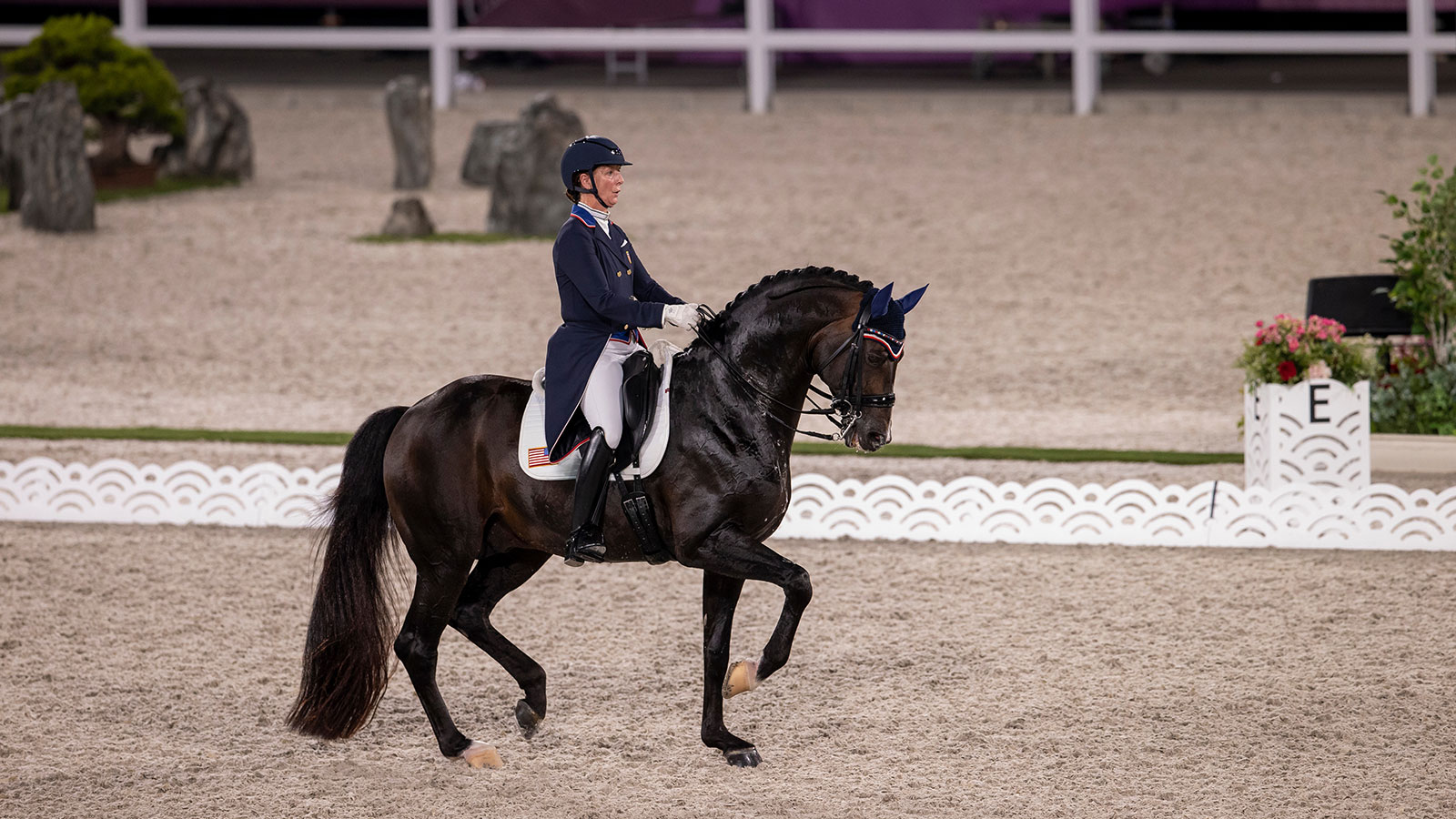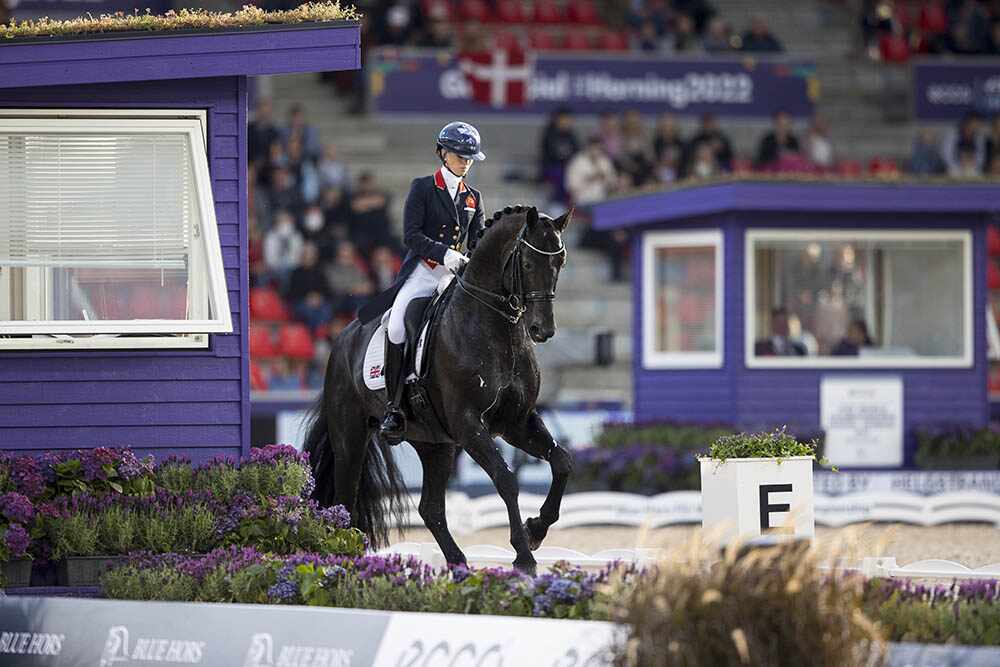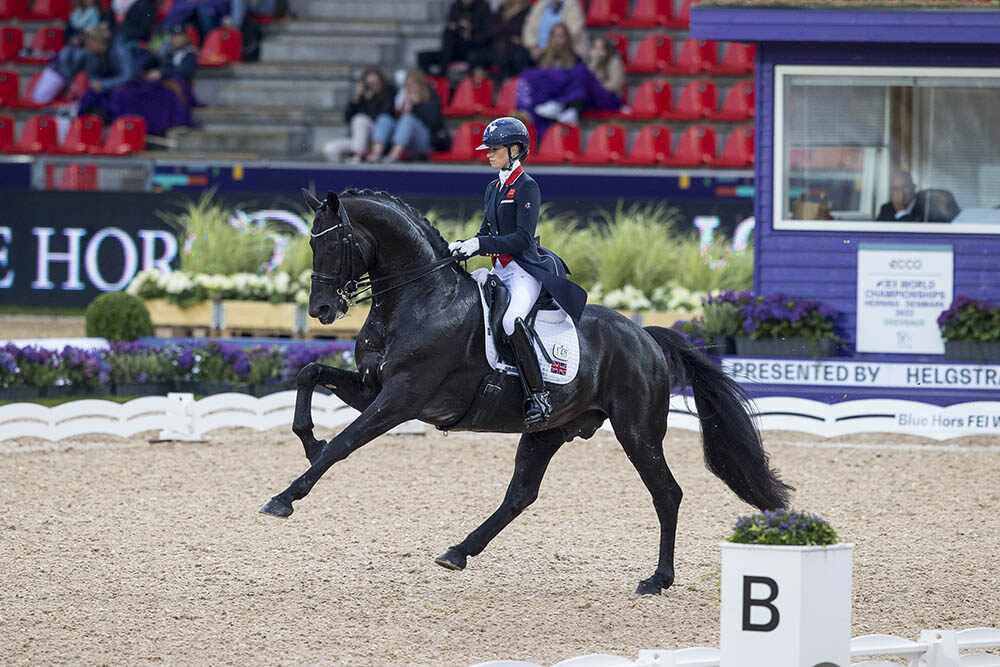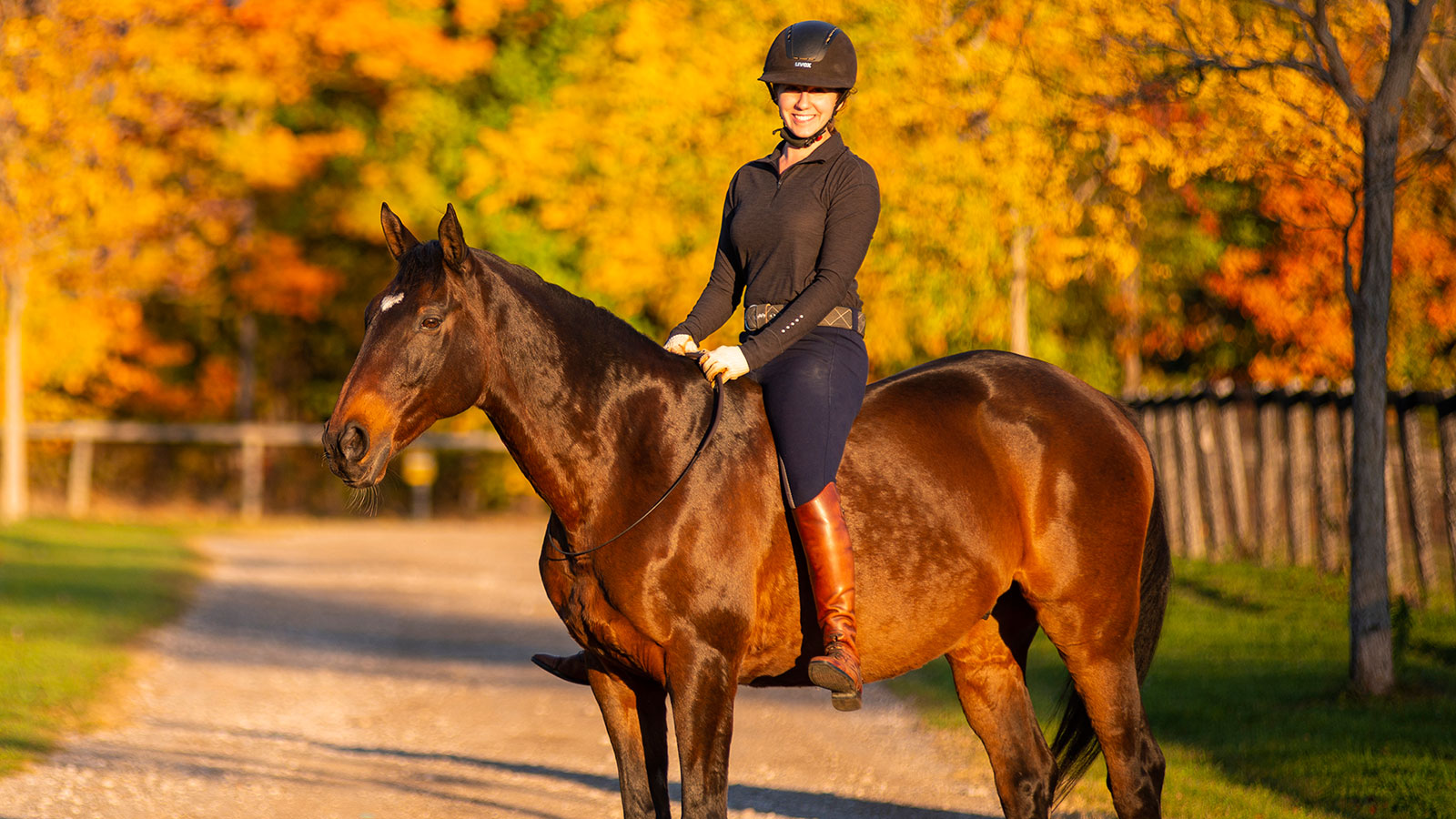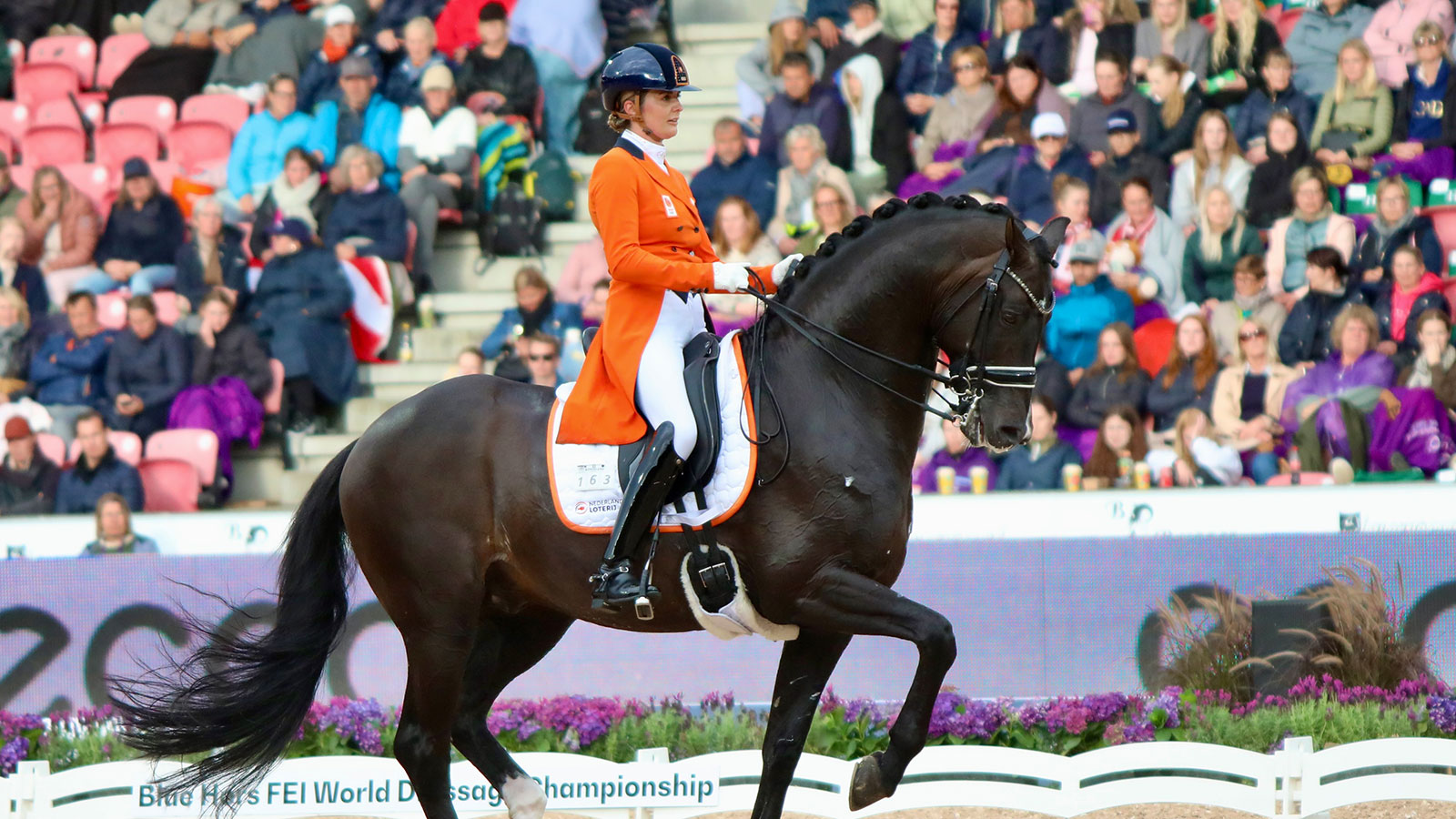Before we start analysing collection, I’d like to mention the FEI World Championships. If you are a keen dressage rider then like me, you were probably riveted to the TV and watching the dressage competition. What a fantastic competition and wasn’t it great to have crowds and very little impact from Covid?

Carl Hester and En Vogue competing at the 2021 European Championships for Great Britain; unfortunately En Vogue was out of action for this year’s World Championships, but that meant we were lucky enough to have Carl commentating! © FEI/Liz Gregg.
Another highlight of the competition for me was Carl Hester‘s commentary. To me, the thing that made Carl’s commentary so insightful was his incredible depth of knowledge. I sometimes found myself drawn to things I may not otherwise have noticed. His technical definitions made it easy to understand the marks riders achieved, or didn’t achieve. It does emphasise what a knowledge-based sport dressage is. Carl’s commentary demystified many seemingly complex moments. He really is an expert in the “language of dressage”!
Collection is both an element of the Training Program as well as the goal of the Training Program. If we think about collection in its most simplest terms, it is the transferring of some weight from the forehand and onto the hind legs of the horse. This transfer of weight onto the hind legs can even happen on a very young horse, to some degree. For instance, he will transfer some weight onto his hind legs when he initially pushes forward in an upwards transition. As a goal of the Training Program, eventually, with systematic training, the horse will be able to maintain a degree of collection, for example, when in a collected trot.
So, let’s take a look at the definition of collection from our reference book The Principles of Riding: “The aim of all gymnastic training is to create a horse which is useful and ready and willing to perform. For the horse to meet these conditions, its weight, plus that of its rider, must be distributed as evenly as possible over all four legs. This means reducing the amount of weight on the forelegs, which naturally carry more of the load than the hind legs, and increasing by the same amount the weight on the hind legs, which were originally intended mainly for creating the forward movement.
“In collection, the hind legs (the hocks and stifle joints) bend more, stepping further underneath the horse in the direction of the centre of gravity, and taking the greatest share of the load. This in turn lightens the forehand, giving more freedom to the movements of the forelegs. The horse looks and feels more uphill, the steps become shorter but without losing their energy or activity, the impulsion is maintained in full in the trot and canter – and as a result, the steps become more expressive and stately.

Jovian (pictured here wtih Andreas Helgstrand at the FEI World Breeding Dressage Championships for Young Horses last year) clearly showing an ability to take the weight on the hindlegs in the canter. © FEI/Leanjo de Koster.
“NOTE: The horse is built in such a way that there is more weight on the forehand than on the hindquarters. By sitting just behind the shoulders, and so placing even more weight on the forehand, the rider makes the weight distribution even more uneven. Hence, training the horse to carry more of the weight on its hindquarters also makes it safer to ride, allowing it to balance and keep its footing, and helps to keep it sound. Every horse will therefore benefit from some degree of collection.
“By training and developing the relevant muscles, it is possible to increase the carrying capacity of the hindquarters. On the other hand, the forelegs, which support rather than push, can only be strengthened to a very limited degree through training. It is therefore more sensible, and indeed necessary, to transfer some of the weight to the hindquarters.
“The increased flexion of the hind legs results in the neck being raised. The horse is then in a position – if the carrying capacity of the hindquarters is sufficiently developed – to move in balance and self-carriage in all three gaits.”
So, there we have our definition of collection. It’s actually not as long or complex as some of our other definitions, for instance straightness. What’s important to remember is that if we refer to a horse as working in a collected state, for example collected trot, and if that has been achieved by adhering to the Training Program, then each of the elements of the Training Program will exist in that collected trot.
Collection gives relevance to all of the other elements of the Training Program, as it is the main “goal” of the program. The first sentence of the definition points out how a degree of collect will benefit all horses, regardless of what discipline they may end up pursuing: “The aim of all gymnastic training is to create a horse which is useful and ready and willing to perform.”
If we are training a dressage horse, we need to train with the clear goal of developing our horse’s ability to collect. Each step the horse takes in its training as a competition horse requires a higher degree of collection.
The Training Program as a collection of six elements is something that is widely recognised and quite well known. You’ll often see them listed or in the form of a pyramid etc. There is often discussion about their order and relevance, but frequently without consideration of how they fit within the Training Program as a whole. There is more to the Training Program than these six elements.

The German ‘Training Program’ pyramid. © Deutsche Reiterliche Vereinigung.

The benefits of collection are not just limited to the discipline of dressage. © FEI/Richard Juilliart.
THREE MAIN STAGES OF TRAINING
There are the three main stages of training. They outline how the horse develops as an athlete and how the type of work he does can condition him to achieve a greater degree of collection. (I don’t want to go into the three main stages in detail this time, but focus on how the type of work impacts the horse and why.)
- The first stage is the preliminary training “familiarisation” (or “acclimatisation”). Here we are talking about a very young horse in its first few weeks of training, but also the same applies to the warm-up of an older, more educated horse, as do the other two stages. Briefly, the aims incorporate the first three elements of Rhythm, Looseness and Connection (contact and acceptance of the bit).
- The second stage is “Developing the forward thrust” (pushing power) and incorporates Looseness, Connection, Impulsion and Straightness.
- The third stage is “Development of carrying capacity”. It incorporates Impulsion, Straightness and Collection.

The benefits of collection are not just limited to the discipline of dressage. © FEI- Richard Juilliart.
There are very few quotes from individual trainers within The Principles of Riding, but there is an important one in this section from the 19th century trainer Gustav Steinbrecht – “Ride your horse forward and position it straight.”
So how does encouraging the horse to work actively forward with impulsion help us to develop collection? Remember in the definition of collection that the steps will shorten. I’m sure most of you will have seen beautiful young dressage horses in young horse classes and noticed just how forward they are ridden. There is obviously a strong link between riding the horse actively forward with impulsion and straightness, and collection. The development of forward thrust strengthens and conditions the horse in preparation for collection. Importantly, it also places the hind leg of the horse further under its centre of gravity into a position to take more weight when asked to collect.
With the development of the horse’s ability to collect, it will improve its ability to extend. Collection and extension are inextricably linked; the quality of the collection will be expressed in the quality of the extension. A work session with the horse should always have a good balance of movements of both lengthening the stride and shortening the stride, which help the horse to develop more strength. A well-designed dressage test will have a good balance of collection and extension as well. If the training is correct, the horse loses none of its impulsion through these transitions.
At the highest level of dressage, we often see changes from maximum collection to maximum extension and vice versa and often one helps the other. For example, in the Freestyle, the extended canter into a pirouette is a very popular movement, and although it is from one extreme to another it usually seems to result in very good pirouettes. This is because the impulsion and the hind leg travelling well under the horse’s centre of gravity created in the extension is carried into the collection. These movements, although at the highest level and extreme, complement each other.
Lottie Fry and Glamourdale produced an amazing display of collection to extension in the canter tour at the FEI World Championships. © FEI/Leanjo de Koster.
Other important exercises in the development of collection are the lateral movements. That is, movements the require the horse to not only move forward, but sideways. As important as these exercises are, they are not a deviation from the importance of riding the horse forward and straight. Regardless of the angle and lateral movement, it is important the horse is always more forward than sideways.
In the Grand Prix Special, we have the passage-extended trot-passage transitions. When this movement is well performed you can see this relationship between collection and extension quite clearly. Interestingly, most FEI riders really like this test. So what is actually happening in the transitions? This is the basis for another article! The catching up of energy, the recycling of impulsion: the half halt.
At the recent dressage FEI World Championships, we saw an amazing demonstration of collection to extension in the Freestyle by Glamourdale, ridden by Great Britain’s Lottie Fry. The stallion went from a collected canter to an incredible extended canter that scored 10s from every judge! It is testament to this horse’s training that through his young horse career and all the way to World Champion, he has lost none of his forward and expressive movement. His collected work is full of impulsion and he always moves freely forward without tension. A great example of how we should all dream about training and developing our horses. EQ
YOU MIGHT ALSO LIKE TO READ:
The Language of Dressage: Straightness – Equestrian Life, July 2022
The Language of Dressage: Rhythm – Equestrian Life, May 2022
